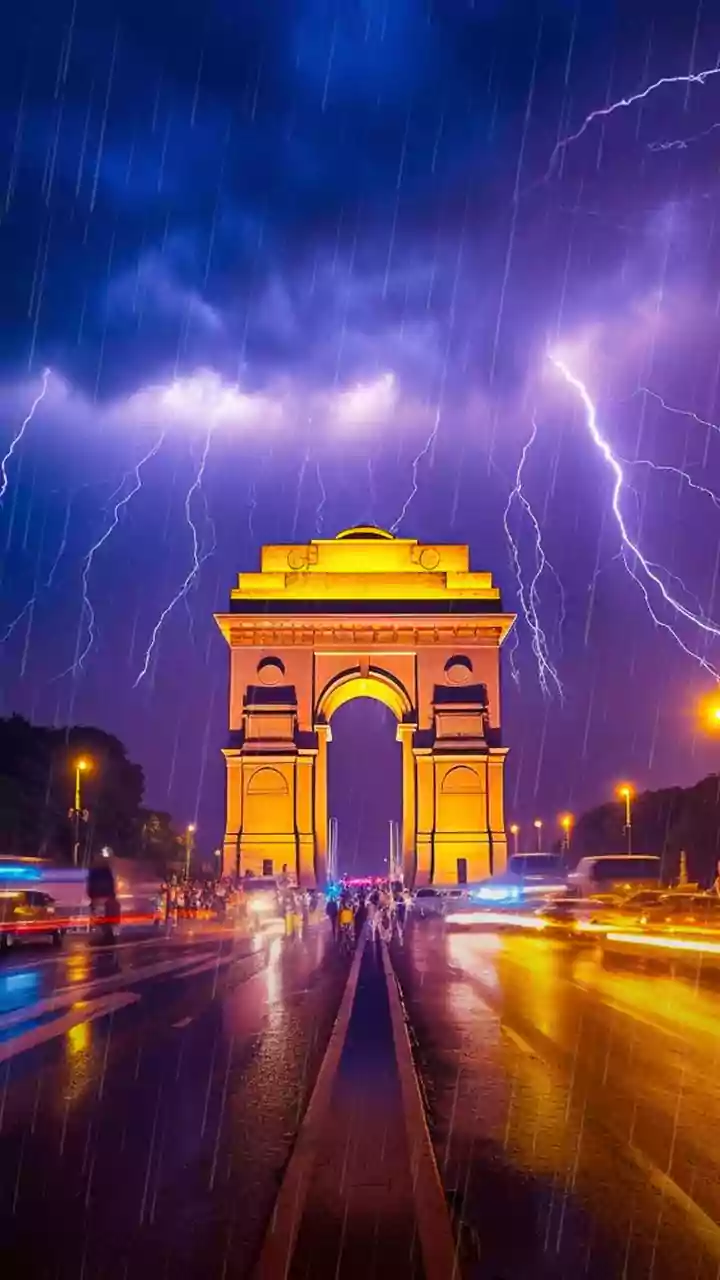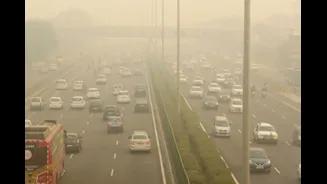On Tuesday, the Delhi government carried out two cloud seeding sorties in an effort to trigger artificial rain and bring down pollution levels. These were part of an MoU signed with IIT Kanpur on September
25 for a series of experimental trials in northwest Delhi, with permissions granted by the Directorate General of Civil Aviation to conduct them between October and November.
The initiative is aimed at exploring cloud seeding as a scientific pollution mitigation strategy during the high-smog season. The Delhi government on May 7 approved a proposal to conduct five cloud seeding trials at a total cost of Rs 3.21 crore.
Cloud seeding is a scientific technique used to stimulate rainfall by dispersing substances such as silver iodide, sodium chloride, or potassium chloride into clouds. These particles act as nuclei around which water droplets can form, increasing the likelihood of precipitation.
Delhi Environment Minister Manjinder Singh Sirsa called it “a huge step taken by the government to mitigate pollution” and said more trials were expected over the coming days.
How Were The Trials Conducted?
IIT Kanpur submitted its report on the cloud seeding trial on Tuesday evening. According to its summary report, two flights were conducted on Tuesday, one from IIT Kanpur and another from Meerut, using a Cessna aircraft equipped with silver iodide and salt-based flares.
The first sortie departed from IIT Kanpur at 12:13 pm and landed in Meerut at 2:30 pm, dispersing approximately 3–4 kilograms of seeding mixture. The second flight took off from Meerut at 3:45 pm and landed back at 4:45 pm, releasing another 4 kilograms of material.
The aircraft flew over areas such as Khekra, Burari, North Karol Bagh, Mayur Vihar, Sadakpur, Bhojpur, and parts of Noida and Greater Noida, attempting to disperse seeding material into existing cloud formations.
Sirsa told India Today that eight flares were used in cloud seeding, each weighing between 2 to 2.5 kilograms, and that each flare lasted about 2 to 2.5 minutes.
Why Didn’t The Cloud Seeding Efforts Bring Rain?
The key reason the cloud seeding sorties on Tuesday failed to produce visible rainfall in Delhi was the extremely low moisture content in the atmosphere. Cloud seeding typically requires humidity levels of over 50 per cent for the seeding agents, such as silver iodide or salt-based compounds, to effectively stimulate condensation and precipitation.
However, during Tuesday’s operation, humidity levels were far below that threshold, with estimates ranging between 10 to 20 per cent, according to IIT Kanpur and Delhi government officials. Despite the presence of cloud cover, the lack of sufficient moisture meant that the seeding flares had little material to work with, severely limiting their ability to induce rainfall.
Delhi Environment Minister Manjinder Singh Sirsa confirmed this while speaking to India Today, saying, “Generally, we need moisture of over 50%. IIT Kanpur carried out the experiment—we are dependent on them. This trial was done to check if we can do cloud seeding in moisture conditions of 10–15%. Since IIT Kanpur was confident, we went ahead with it.”
Professor Manindra Agrawal, Director of IIT Kanpur, echoed this in an interview with NDTV, stating, “Unfortunately, the clouds that are present today do not have very high moisture content. I am told it was only up to 15–20%. So, the possibility of causing rain with such low moisture content is not very high.”
Agrawal also noted that although there was cloud presence in some parts of the NCR, not all clouds are equal when it comes to seeding potential. “What our team found was that the cloud cover had very little moisture content. And this could be true about the part we flew over… So we do not expect any rain to occur today,” he said.
While the outcome of the trial was underwhelming, Agrawal clarified that the purpose was also to test the feasibility in adverse conditions. “It is an SOS solution. When you have a crisis situation, very high pollution, it is one of the methods one can attempt in order to bring down pollution. It is not a permanent solution,” he told NDTV.
Was There Any Rainfall At All?
Despite the lack of visible rainfall in Delhi, official data captured by IIT Kanpur showed very minor drizzle in some parts of the NCR.
The report submitted by IIT Kanpur showed 0.1 mm of rainfall in Noida and 0.2 mm in Greater Noida, both around 4:00 pm on Tuesday.
Did The Trials Reduce Pollution Levels In Any Way?
According to the Delhi government, a marginal improvement in air quality was recorded following the trials. The report showed that PM2.5 levels at Mayur Vihar, Karol Bagh, and Burari dropped from 221, 230, and 229 to 207, 206, and 203, respectively, after the first round of seeding.
Similarly, PM10 levels fell from 207, 206, and 209 to 177, 163, and 177 at the same stations.
IIT Kanpur researchers attributed this to denser moisture created by seeding particles that helped some pollutants settle despite negligible wind conditions.
What’s Next For Delhi’s Cloud Seeding Programme?
While the Tuesday trials yielded mixed results, both IIT Kanpur and the Delhi government have signalled that more experiments are likely in the coming days, depending on atmospheric conditions.
Sirsa told India Today, “If we have done cloud seeding, then we are going to see cloud-seeding rain only.” He said the purpose of conducting trials in low-moisture conditions was to gather data “from every humidity level to assess what kind of rain can occur in different conditions.”
He further added that nine to ten more trials are planned, targeting areas in northern Delhi and its outskirts, guided by wind directions provided by the India Meteorological Department (IMD).
Conclusion: A Promising Start With Limitations
Delhi’s cloud seeding experiment may not have produced the desired rainfall, but it has sparked serious engagement with weather modification as a short-term pollution mitigation tool. As both the government and IIT Kanpur have emphasised, cloud seeding cannot replace pollution control at the source, but in times of crisis, it may yet offer limited relief, provided the skies cooperate.















